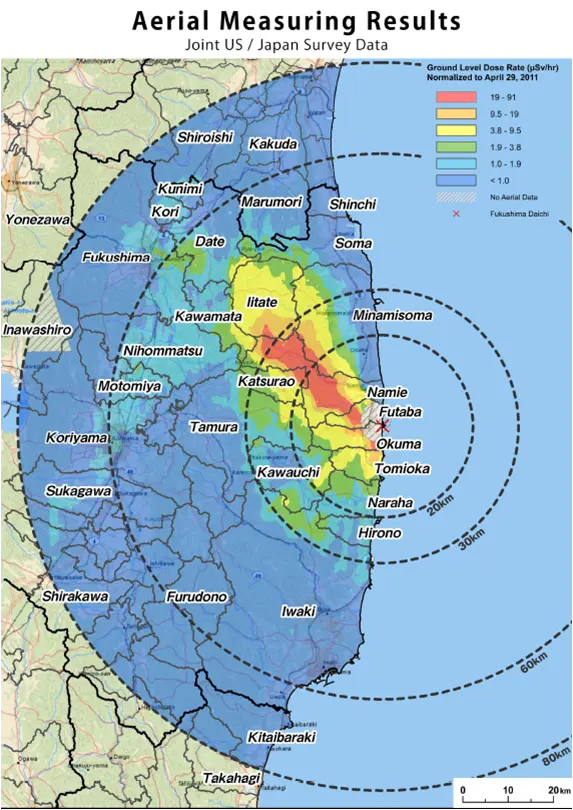Japan exported about $600 million worth of aquatic products to China in 2022, making it the biggest market for Japanese exports, with Hong Kong second. Sales to China and Hong Kong accounted for 42% of all Japanese aquatic exports in 2022, according to government data.
They still can’t come up with anything other than “it’s not safe!” And “you’re so irresponsible”?
Previous articles on this say the water is less contaminated than that which comes out of some of China’s plants.
This article: IAEA says 10,000 becquerels per liter is the safe limit. Japan’s output will be 63 per liter.
anyone know a better radioactivity monitoring site than this one?
https://map.safecast.org/?y=37.527&x=140.969&z=10&l=0&m=2
Fukushima sure is lit up like a Christmas tree on this one.
Radiation levels have decreased since the accident in 2011:

https://upload.wikimedia.org/wikipedia/commons/0/06/Fukushima_radiation_dose_map_2011-04-29.pngNote that on Safecast, you can enable “Crosshair” in the hamburger menu to see the actual numbers.
The central blob area is currently around 5 μSv/hr, so if you live there for a year it’s 44000 μSv, or 44 mSv. The xkcd chart says 100 mSv is the lowest one-year dose clearly linked to increased cancer risk.
So 3 years there equals measurable increased cancer risk.
“Lit up like a Christmas tree” - yeah, at 4 µSv per hour. So you’d have to swim there for just about 4000 hours to get the equivalent of a full body CT scan.
I guess camping at Chernobyl is no big deal now as well.
https://map.safecast.org/?y=51.384&x=30.078&z=12&l=0&m=2
There were tourist trips into the exclusion zone around Pripyat (closest town to the plant) all the time until Covid. I’m guessing they haven’t restarted because of the war now, but plenty of people visited with no ill effects.
Visiting, sure. Eating products grown/harvested there seems ill advised.





